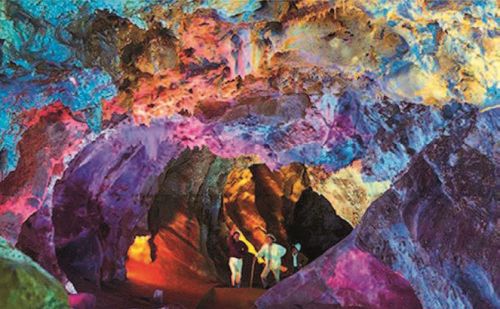Cave morphology and moonmilk deposits of Ryongmun Cavern, Democratic People’s Republic of Korea: A Study for the Conservation of Natural Heritage
DOI:
https://doi.org/10.3986/ac.v53i1.12455Keywords:
Ryongmun Cavern, underground karst, geoheritage, natural heritage, conservationAbstract
The Ryongmun Cavern, registered on the World Heritage Tentative List, is the largest and most beautiful karst cave on the Korean peninsula. The characteristics of the cave morphology and moonmilk deposits in the Ryongmun Cavern were studied. A cross section of the main direction of the cave shows that the Ryongmun Cavern is made up mainly of four strata and this caused 4 stages of decline in underground waterline in the course of cave formation. The cave is mainly characterized by NW–SE-trending, NWW–SEE-trending and NNE– SSW-trending passages. The horizontal passages usually have large and wide spaces, whereas the inclined ones are relatively small and narrow. The cave minerals in the Ryongmun Cavern are mainly calcite and aragonite. In the cave, stalactites, stalagmites, limestone columns, cave pearls, etc. Are calcite; and, anthodites are aragonite. In the cave, speleothems display a wonderful underground landscape in harmony with the cave bedrock and groundwater (streams, waterfalls and ponds). The main scenes of the underground karst landscape in the cave are stalactites, stalagmites, limestone columns, stone waterfalls anthodites, underground waterfalls, and underground ponds.The deposits that have been formed recently on the surface of speleothems and walls in the cave are mainly moonmilk composed of hydromagnesite (Mg5(CO3)4(OH)2•4H2O) with an average particle size of 0.55 μm and chemical composition of MgO–29.43% and CaO–6.28%. The moonmilk is present in a white, fine powder form, a hand-rubbed smooth, and a moisture content of 42.0%. Also, the pH is 10.09, which is alkaline. In the Ryongmun Cavern, moonmilk was formed at sites with very low supply of karst water and relatively high wind speeds. The unique underground karst features provide sufficient evidence for geoheritage value of the cave and the characteristics of moonmilk provide a significant implication for management and preservation of the cave environment.
Downloads

Downloads
Published
How to Cite
Issue
Section
License

This work is licensed under a Creative Commons Attribution 4.0 International License.
Authors guarantee that the work is their own original creation and does not infringe any statutory or common-law copyright or any proprietary right of any third party. In case of claims by third parties, authors commit their self to defend the interests of the publisher, and shall cover any potential costs.
More in: Submission chapter




